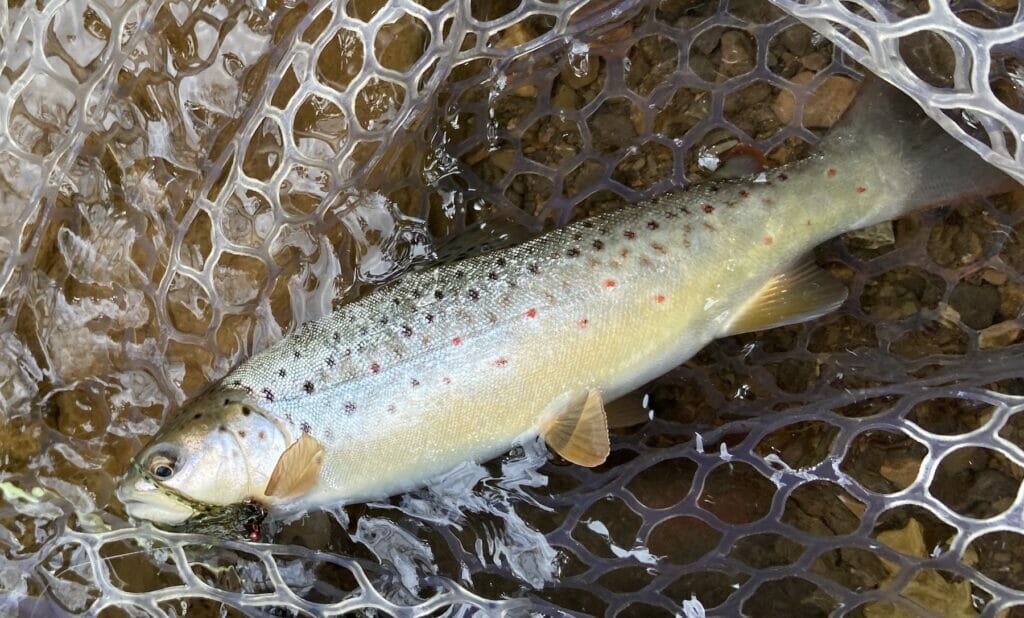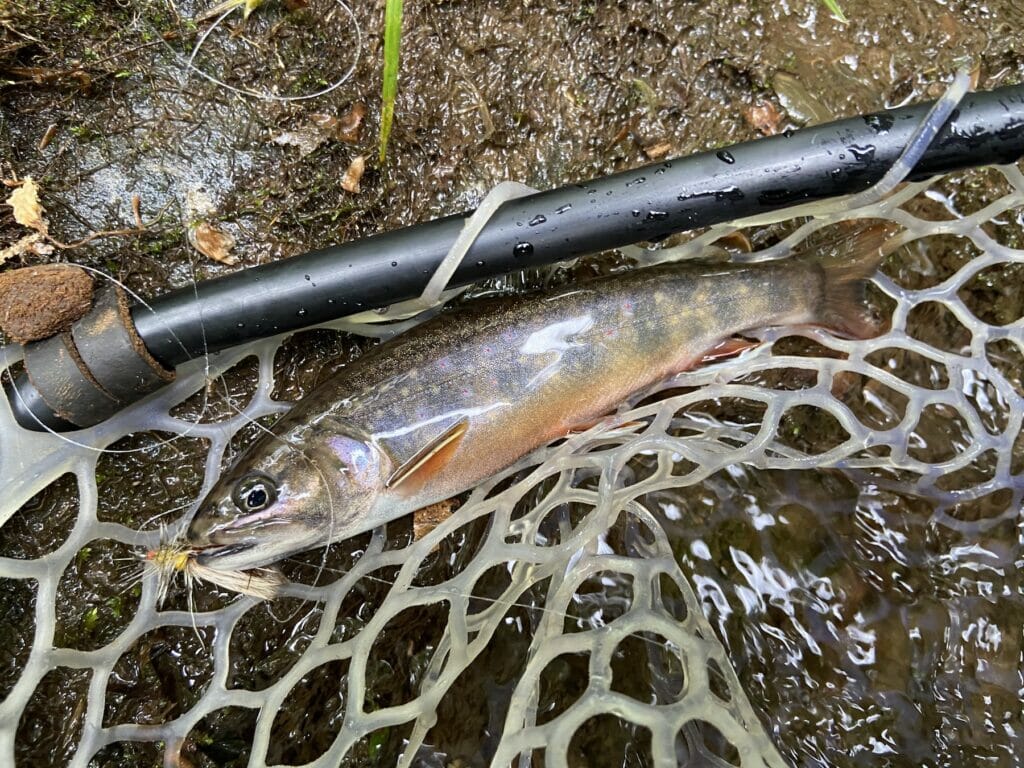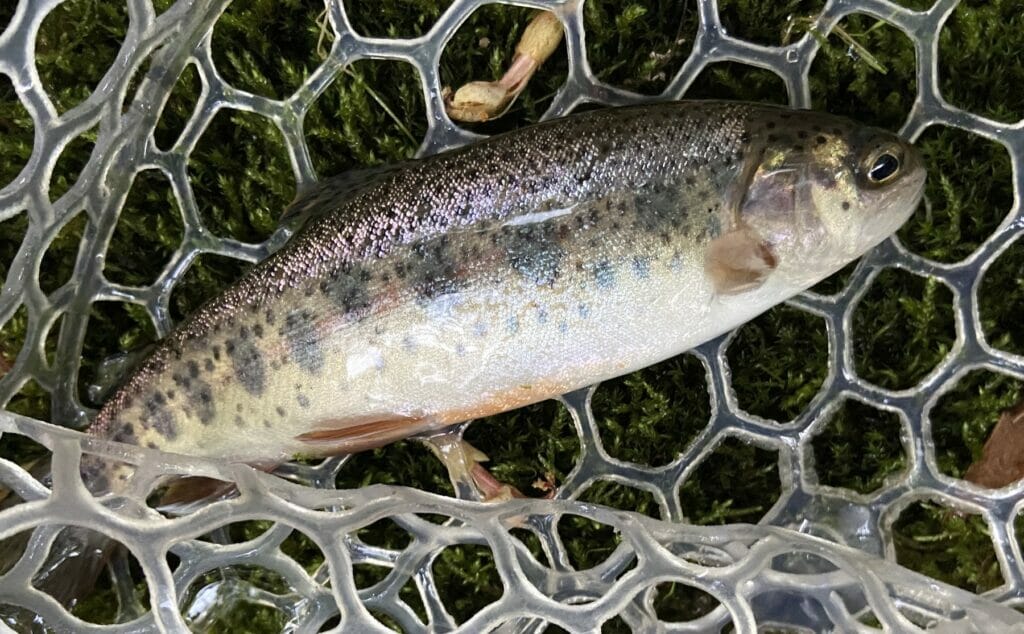The cast was too good. The drift was too good. There was no way this was not going to work.
And it did. A trout dimpled the surface as it slurped in the little olive Stimulator.
It wasn’t a big trout, but I played it carefully in the fading light of a sultry Virginia May evening.
Out came the net and in went the trout.
I lifted it for a look.
“A brook trout?” I muttered. “Nooooo!”
But then I had to laugh to myself as I realized that I now understood why challenges like the Utah Cutthroat Slam are so popular.
I’m not against competitive fishing, be it bass tournaments, one-fly events, or competitive trout fly angling. But it’s never personally been my thing. I scratch the competitive itch other ways, and have always preferred to keep my fishing stakes-free.
Then Virginia fisheries biologist Jason Hallacher called me one day this winter and said the Department of Game and Inland Fisheries was launching the Virginia Trout Slam Challenge.
While some trout slams raise funds for conservation, Virginia’s version is more about generating interest in the state’s many and varied trout fishing resources, including some of its lesser-known waters. It’s simple, too. Catch a brown, rainbow and brook trout — stocked or wild — in a single day.

The award for completing the challenge is just a sticker, but it’s a great sticker with art by Ron Shearer. An application fee of $5 covers administrative costs of running the program.
The agency has a great interactive trout map that can help intrepid anglers plan their approach. Hallacher and his colleagues went a step further and put together a list of suggested spots where all three species are either in a single stream, or in streams close to each other.
I had an idea for a spot, and saw that it was listed: Big Stony Creek and Little Stony Creek in Giles County, a rural, mountainous county adjoining West Virginia.
I started in the early afternoon on Big Stony, a decent-sized stream that has stocked rainbows and browns, wild browns and a few wild brook trout.
Fishing outside the stocked area I quickly checked the brown off the list with a 10-inch wild fish that hit a streamer on the swing.
The next few hours produced a few more fish, all wild browns. The fishing was pretty good but if I was going to get a brook trout I knew I’d have to move. Reluctantly, I drove to a small tributary that I know has brookies.
The fish were active there, too. But they were all little wild browns. It was late afternoon and I realized I was starting to get a little tense.

I bailed from the lower reaches of the stream and got back in a mile uphill. Boom, a gorgeous little brook trout hit one of my first casts.
The rainbow would be easy. Little Stony, which runs down the next watershed over, is full of wild ‘bows. Instead of heading over there I went back to Big Stony for a couple more hours of fooling with browns.
Eventually it was time to go. I parked at the Cascades Recreation Area on Little Stony, paid my $3 fee and headed to the creek.
The air was full of hatching sulphur mayflies. Unfortunately the rec area closes at sunset so I wasn’t going to be there for the spinner fall.
But, again, these were going to be hungry little rainbows. How hard could it be?
Pretty hard, it turned out.
For 30 minutes I couldn’t buy a hit. Then came the brookie. I looked at my watch. I had 15 minutes.
Finally, at T-minus five minutes, I hooked another fish. It wasn’t more than 5 inches long. But it didn’t matter. It was a rainbow.

After a quick picture I slipped the little trout back into the water and it darted away.
As I hustled up the bank to my truck, I raised my arms triumphantly. The motion was only half in jest.
Mark Taylor is Trout Unlimited’s eastern communications director. He’s based in Roanoke, Va., in the heart of Appalachian trout country.



